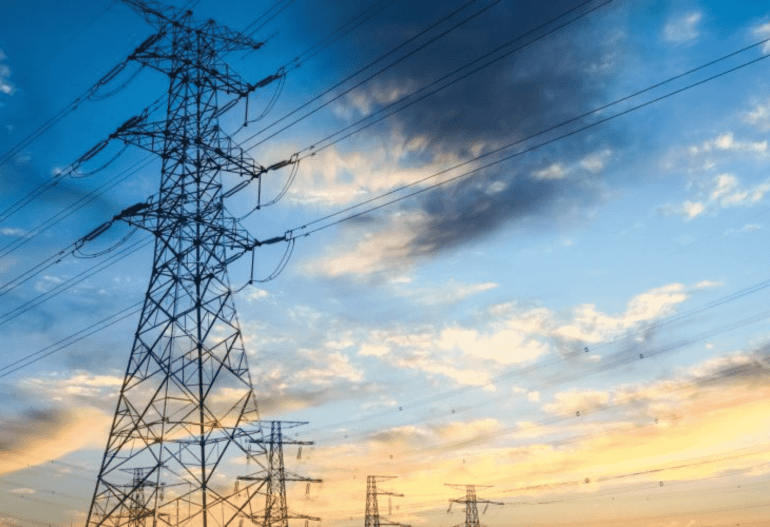The production of energy is a significant aspect, but it’s also necessary to consider how this electricity is transferred from the power plants to the substations and then to the customers. Transmission and distribution lines perform this task.
Transmission lines are long conductors with specialised designs (bundled) that are used to transport large amounts of generated electricity at very high frequencies from one site to another as the level of the voltage varies. Low-voltage distribution lines are used to transport power for residential and industrial use from substations to end customers.
Electricity is transported from one location to another via both distribution and transmission lines. The fundamental uses of transmission vs distribution lines, their functioning supply phase, voltage level, and level of conduction are used to describe the differences between the two types of lines. Let’s discussed the transmission vs distribution lines,
Below is a tabled explanation of the distinctions transmission vs distribution lines.
| Characteristics | Transmission lines | Distribution lines |
| Usage | Electricity is transported by transmission lines from power plants to substations. | Electricity is delivered to the consumer’s end of the distribution line from the substation. |
| Phase | Electricity is used in a three-phase supply system. | For carrying electricity, a single phase supply system is necessary. |
| Voltage level | transports electricity at an extremely high voltage. 11000 volts or such. | carries power at a highly safe 220 volts, which is a very low voltage. |
| Level of current conduction | They have a conductivity of 69 kV or higher. | They don’t conduct above 69 kV. |
| Thickness | Thick lines are used for transmission. | Compared to transmission lines, distribution lines are thin. |
| Line maintenance | Transmission lines need to be operated more actively than distribution lines. They need additional maintenance, which requires both automatic and manual treatments. | Compared to transmission lines, distribution lines require less maintenance. |
| Applications | Electricity is transported from power plants to substations using transmission lines. | Electricity is transported using distribution lines from substations to load points like homes, businesses, and industries. |
High-voltage transmission lines are used to move electricity from a power plant to a substation, where it is then dispersed to other locations for a variety of uses. Low-voltage distribution lines product are used to transport power for commercial and residential use from substations to end customers.
Transmission lines aid in moving electricity from a power plant or power station to the various substations, while distribution lines transport electricity from the substation to the consumer’s end, i.e., to the residential and commercial customers.
In a three-phase supply system, power or electricity is transported via a transmission line. For carrying electricity, a distribution system needs a single-phase supply system. Transmission lines transport energy at a very high voltage of approximately 11000 volts, whilst distribution lines do it at a relatively low and safe voltage of approximately 220 volts. Distribution lines carry current at voltages lower than 69 kilovolts, whereas transmission lines carry current at voltages greater than 69 kilovolts. In comparison to transmission vs distribution lines are slender.
Difference between maintenance
Compared to distribution networks, transmission networks demand more active operation. Interventions that are both automatic and manual must be used for maintenance. Delivery of local electricity uses distribution lines. Transmission lines are active systems, while distribution lines are passive (they are not actively managed by operators or computer programs). They also don’t need much maintenance because the power flow is often unidirectional (from high voltage to low voltage). In places where distributed generation is used, this has started to alter.
It’s not uncommon for shoes to be thrown over telephone and distribution power lines and left hanging by their laces, especially at intersections. Over the past two decades, there has been a significant decrease in the act because it is thought to represent a place where drugs are dealt and/or gang territory. Massive cleanup initiatives have been implemented in cities like Los Angeles and Chicago to reduce potential hazards and enhance local quality of life.
Difference between power lines
Transmission power lines, often known as high-voltage lines, can range in voltage from 69 kV to 765 kV. Compared to distribution power lines, power poles are taller and cables are thicker. Power lines that transmit electricity in both directions are known as bi-directional transmission lines.
The grid’s stability depends on this feature. Electricity travels from areas of generation to areas of demand in wholesale electricity markets. However, as these areas of demand evolve, the electricity will move in new directions.
Low voltage distribution power lines, distribution lines’ voltage ranges from 4 KV to 69 KV. The secondary transformer within the cylindrical box lowers the voltage to 120V or 240V. In the US, distribution lines and power lines for a single direction are known as mono-directional lines. As a result, generation was not considered when designing the distribution network.
However, smaller generation facilities (such as wind turbines, solar panels, and other localised power sources) are connected to the distribution network as distributed generation has begun to be adopted on grids around the world. The distribution infrastructure is put under more strain as a result, and in some circumstances, grid renewal initiatives are necessary to make it more effective for these more modern power producing techniques.
Conclusion
All of the significant distinctions between transmission vs distribution lines are listed in the table above. Transmission lines are used for long distances, have greater voltages, and carry more electricity. For instance, you can see them at the side of the road. Distribution lines transmit electricity locally over small distances at a lower voltage.
The biggest distinction is that distribution lines, which carry electricity from substations to consumer loads, operate at low voltages while transmission lines, which carry electricity from generating stations to substations, operate at high voltages.
The distribution infrastructure is put under more strain as a result, and in some circumstances, grid renewal initiatives are necessary to make it more effective for these more modern power producing techniques. Let’s check anbout the product of transmission vs distribution lines or elements of electrical distribution systems which is available on the IAC electricals.






